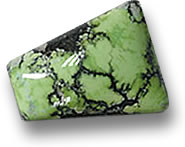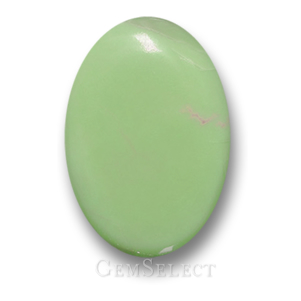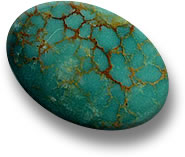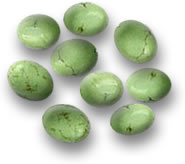Green Turquoise Gemstones

Introduction
When most people think of turquoise, the classic teal color often comes to mind. The name green turquoise actually derives from the gemstone itself, which has long been associated with the color. Historically, blue turquoise varieties were considered the most desirable, while green turquoise, or turquoise green, was often seen as inferior. The ancients believed that blue turquoise would maintain its color over time, while stones with lesser blue hues would eventually fade to green. However, this belief has proven to be inaccurate. In recent years, the demand for green turquoise has surged, with many varieties of green turquoise stone now recognized as some of the finest available. Notable examples include top-ranked turquoise from Nevada, as well as the highly sought-after "Skyhorse" and "China Mountain" varieties from China.
Color Variations and Composition
Turquoise is colored by traces of copper, the same element responsible for the green-blue color of Paraiba tourmaline. Its greens can range from shades of bluish-green to apple-green or lime-green. Generally, if turquoise forms with less copper and more aluminum, the material tends to be green. But when zinc is also present, it can result in a rare lime-green color; a rare hue found only in a few areas, including Mongolia and the United States. Much of the green turquoise from the USA gets its color from iron, rather than aluminum; if iron or zinc replaces the aluminum entirely, the material becomes iron-rich chalcosiderite or zinc-rich faustite. Veining is normal for green turquoise and matrix colors can vary from brown to black, and even from golden to yellow. Black matrix is usually owed to iron pyrite, while brown is usually caused by iron oxide. Golden colors may be due to rhyolite matrix. You might find it interesting how these elements mix to create such varied shades - it's like nature's own chemistry experiment. For more details on semi-precious turquoise varieties, explore their unique compositions.

Notable Sources
Green turquoise is a rare find, but it can be discovered in select regions worldwide. Mongolia and Egypt are known for their turquoise deposits that lean more towards green than blue. India also produces green turquoise from its mines. While China boasts desirable deposits, much of its turquoise is often enhanced. The United States currently leads in the production of green turquoise, particularly popular for inlay jewelry in the Southwestern USA. Nevada's Tonopah Blue Gem mine is renowned for its lime green turquoise with a golden rhyolite matrix. This material from Tonopah is highly prized for its excellent polish and durability compared to other deposits. Other notable turquoise mines in Nevada include the Carico Lake Mine, Pixie Mine, Orvil Jack Mine, Damale Mine, and Stennich Turquoise Mine. Learn more about turquoise mining sources and their global significance.

Mining and Availability
Today, green turquoise stone is highly sought after by jewelers and collectors. The mining for green turquoise has drastically slowed down since the 1990s due to depleting sources. Thus, many are now buying it as an investment. If you're considering adding some to your collection, now might be a good time before supplies dwindle further.

Cultural and Metaphysical Significance
Disclaimer: The following information about metaphysical properties is based on historical beliefs and is not scientifically proven. It is provided for informational purposes only and should not replace professional medical advice.
Green turquoise is thought to possess all the same metaphysical properties as other turquoise varieties. It was especially popular among Native Americans. Some believe that turquoise possesses protective properties. The ancient Tibetans believed that turquoise carried strong healing powers. In Chinese feng shui, turquoise is believed to carry the energy of water. For those who follow Western astrology, it is the stone of Sagittarius. For modern birthstone followers, turquoise is often worn as a traditional birthstone for December.
Frequently Asked Questions
What is green turquoise?
Green turquoise is a variety of the turquoise gemstone that exhibits shades ranging from bluish-green to lime-green, colored primarily by traces of copper, aluminum, iron, or zinc.
How does green turquoise differ from blue turquoise?
Green turquoise typically forms with less copper and more aluminum or iron, leading to greener hues, while blue varieties have higher copper content.
Where is green turquoise primarily sourced?
Key sources include the United States (especially Nevada), Mongolia, Egypt, India, and China, with the U.S. leading in production.
Is green turquoise valuable?
Yes, demand has surged in recent years, and with mining slowing due to depleting sources, it's increasingly seen as an investment.
What are the believed metaphysical properties of green turquoise?
It's thought to offer protection, healing powers, and water energy in feng shui, but these are historical beliefs and not scientifically verified.

